
When my second book came out a couple of years ago it was mid-pandemic so I wasn’t traveling to conferences, I was pretty busy with other projects, and not a whole lot of promotion happened. Still, a few people got copies and I’ve had a trickle of wonderful tags when folks have actually been inspired to build something based on the designs in the book.
Since gift giving season is on us and some of you might be looking for gift ideas – how about giving a copy of Build Your Own Farm Tools?
This week I’m going to post a few of the pages from the book with some of the parts that jumped out at me when I was flipping back through it this morning. I’ll add sample pages to this post each day for the next week or so.

Cover photos are by Shawn Linehan and were taken at Cully Neighborhood Farm and and 47th Avenue Farm (who is still using one of my basic #farmhandcarts more than a decade later – the design is in the book).
All of the excellent illustrations are by Michael Gellaty.
Ask your local bookseller to order you a copy if they don’t already have it on their shelves, or order one from Growing For Market – it’s under $20!
Oh, and I just noticed on the back cover those lovely endorsements from Ben Hartman and Leah Penniman – they both have great books too so check those out as well!
The Drip Roller

Build Your Own Farm Tools is a collection of tools that I’ve built, used and found useful for many years. A perfect example is this simple to build drip roller based on one I first used on a farm in 1999. I don’t know who made the original but I’ve tried to improve on their design multiple times but keep coming back to more or less the original. For designs like this one there are important tips for how to use the tool base on my long experience using it. I also give tips for building the tools that can be used in other places, like the ones here on laying out the legs.
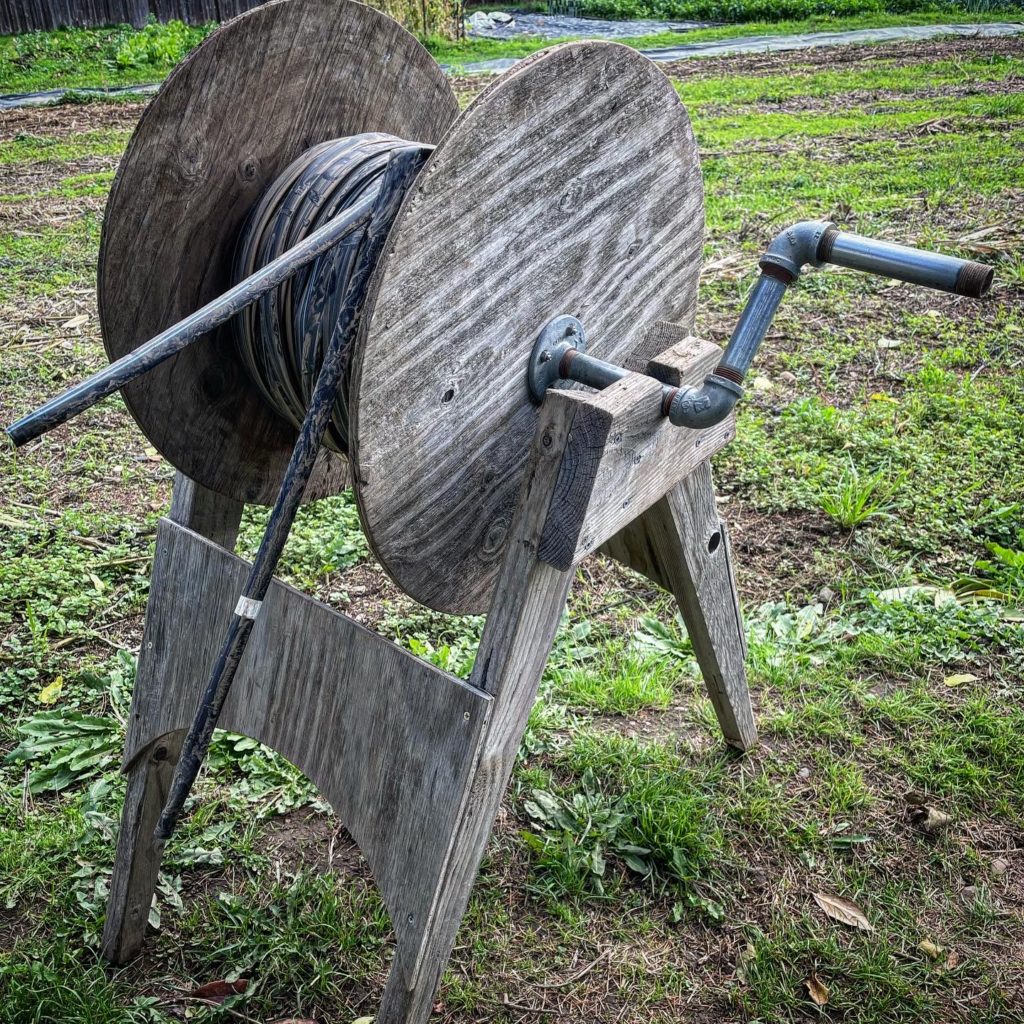
Ergonomics

I think about ergonomics quite a bit when I’m designing – basically designing for people to be efficient. That also means safe and healthy because it’s not very efficient if you and your workers are spending extra energy working around a tool that encourages or requires you to be in positions that are awkward or potentially damaging.
One example is the way I size our spray tables for single workers, essentially an easy arm span wide (which conveniently is about 4’ on average, also the length of a bundle of lath) and an arm’s reach deep, or about 2’. This limits the unconscious tendency to extend and reach for things at the edge of a table that is too big. On a properly sized table nothing is far enough away to require reaching. This helps to protect your back and to save energy.
There are lots more examples in the book, This just happens to be one that was illustrated. Also a little behind the scenes note: even though the book is illustrated almost every illustration had at least one, and often multiple reference photos. Ultimately it’s a little easier with a good illustration to highlight the really important parts of an image and to leave out potentially distracting parts, but it’s easier to start with photos and them strip them down to their essentials.

Glove Drying Rack

Today was a harvest day and this time of year especially we’re wearing a lot of gloves on the farm to keep our fingers warm. Inevitably those gloves get wet, ’tis the season. Probably the simplest tool in the book is the glove drying rack. Typically I’ve had an old wire hoop for holding up row cover or section of heavy fence wire to make these and it’s just a matter of bending a bunch of right angles in one and then drilling some wire sized holes at an angle in some wall studs, or a beam to insert the ends into. Drying the gloves at an angle works better than vertical as it holds them open better.
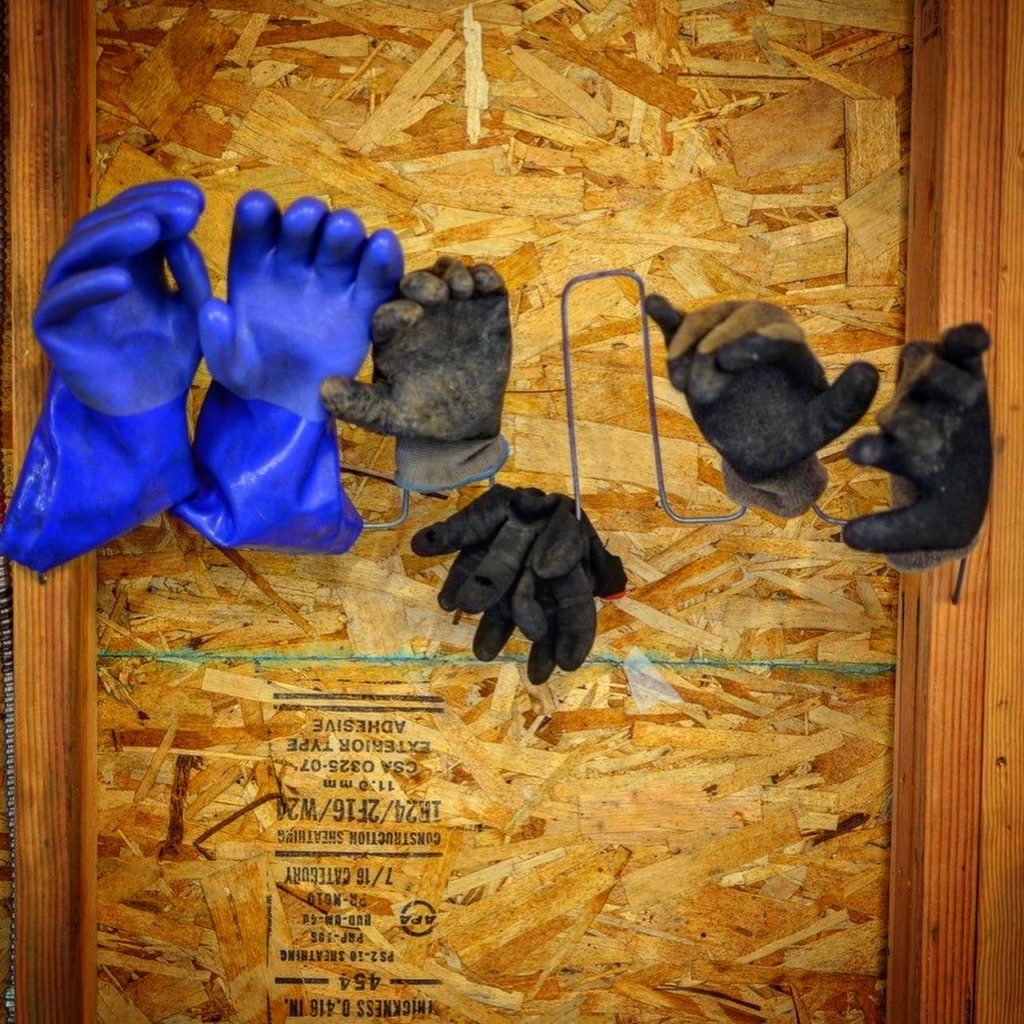
Irrigation Systems

There’s a whole section on setting up irrigation systems for small farms, both drip and sprinkler. I get into the parts that I use in my systems, as well as how I size everything for available pressure and flow – and how to know what your pressure and flow is.
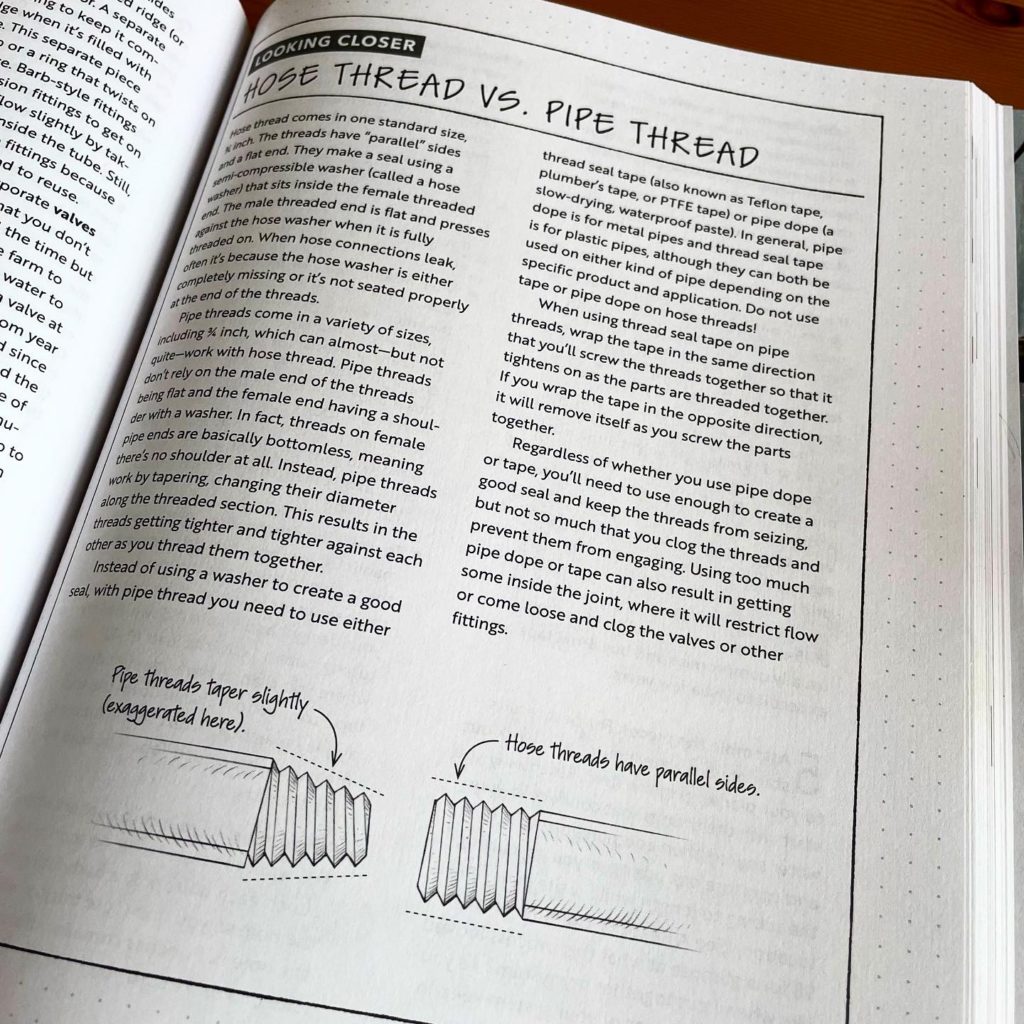
On a side note, when I was looking back at the “Looking Closer” section on gravity and psi, it tells you what the water pressure is at the bottom of a 10 ft deep pool, but I started thinking about how that’s really the pressure above atmospheric pressure so it’s not giving you any perspective on why your ears feel that change, since 4.3 psi sounds pretty small.
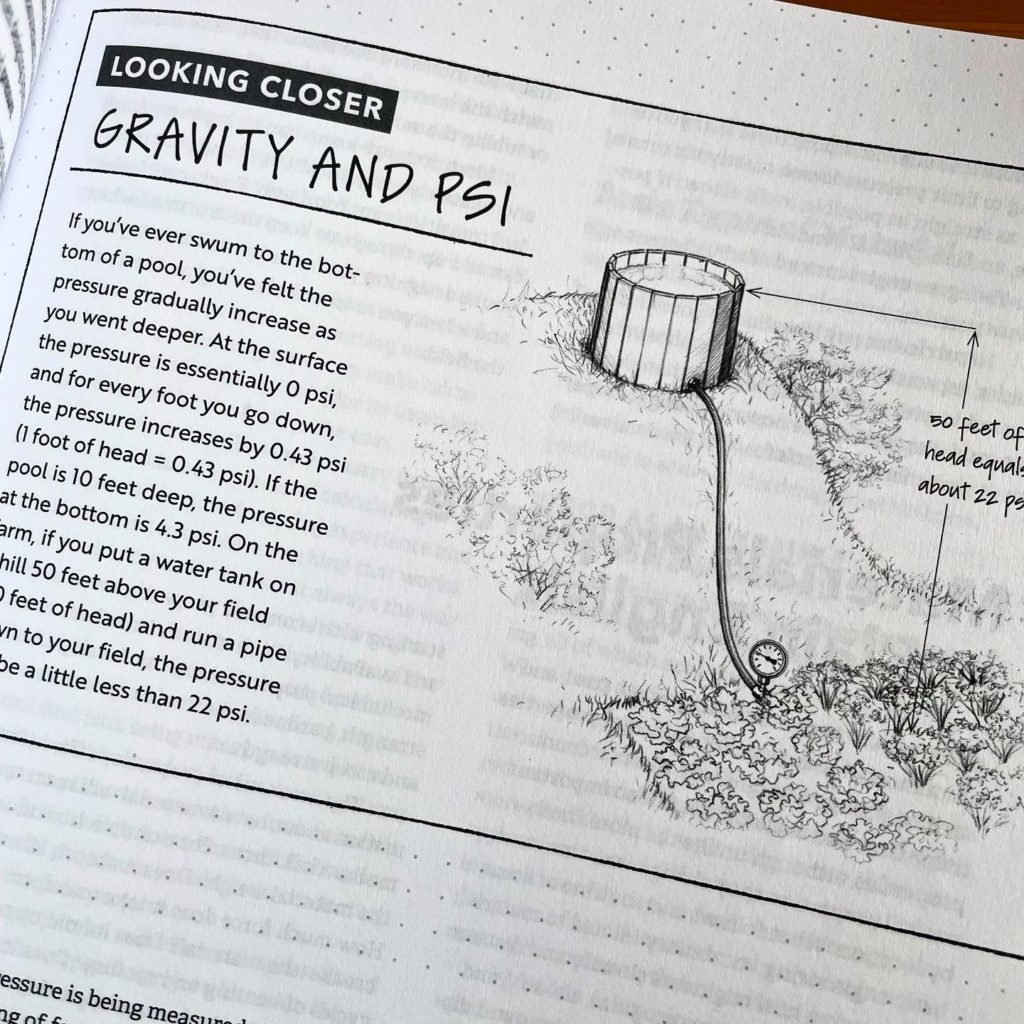
The change from atmospheric pressure is the number you need for irrigation calculations but to give you a sense of how much change that is for your ears, at the surface of the pool you’re typically feeling about 14.7 psi give or take 0.14 psi depending on the weather and your elevation (this is atmospheric pressure at sea level, it drops as you go up in elevation). Diving to 10 ft in the pool increases that by 4.3 psi to 19 psi. In an airplane it goes the opposite direction, down to somewhere around 10 psi, similar to what you’d feel at about 8000 ft of elevation.
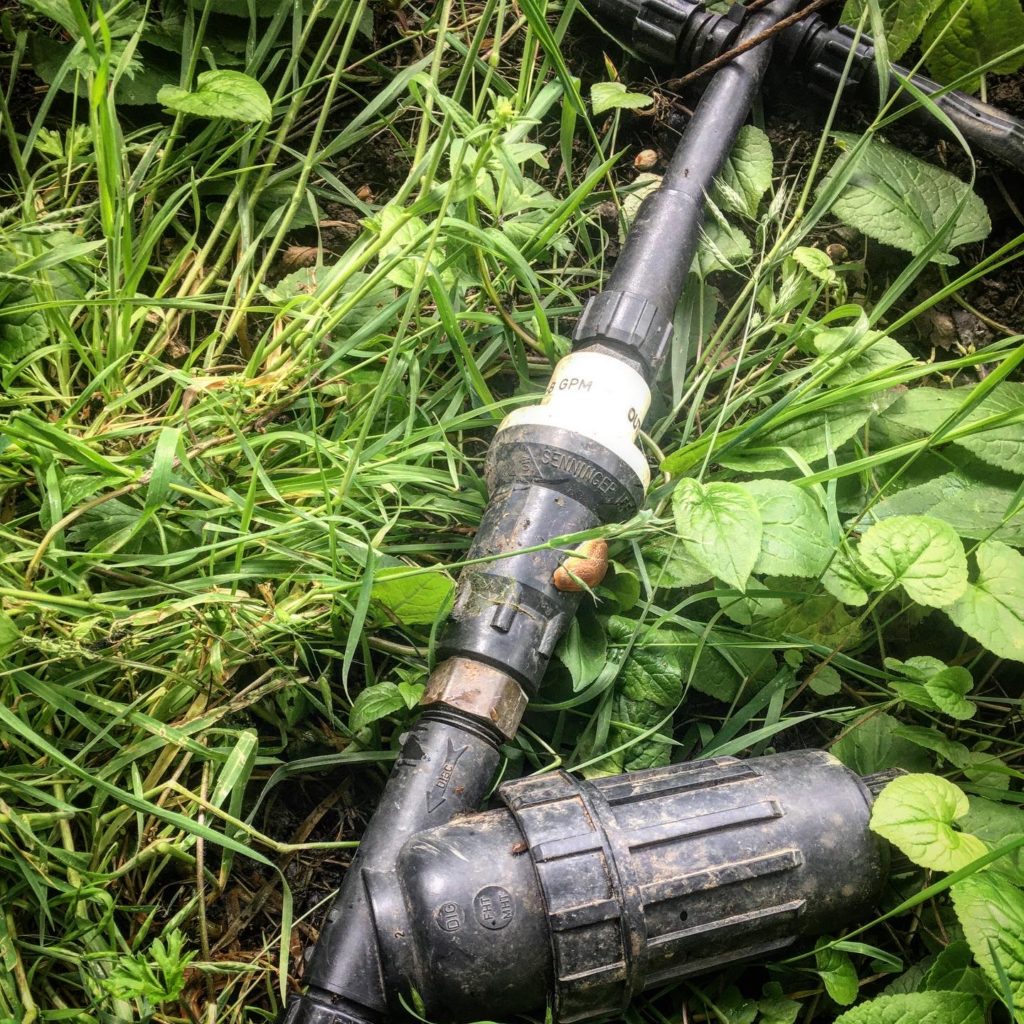
Spreadsheets
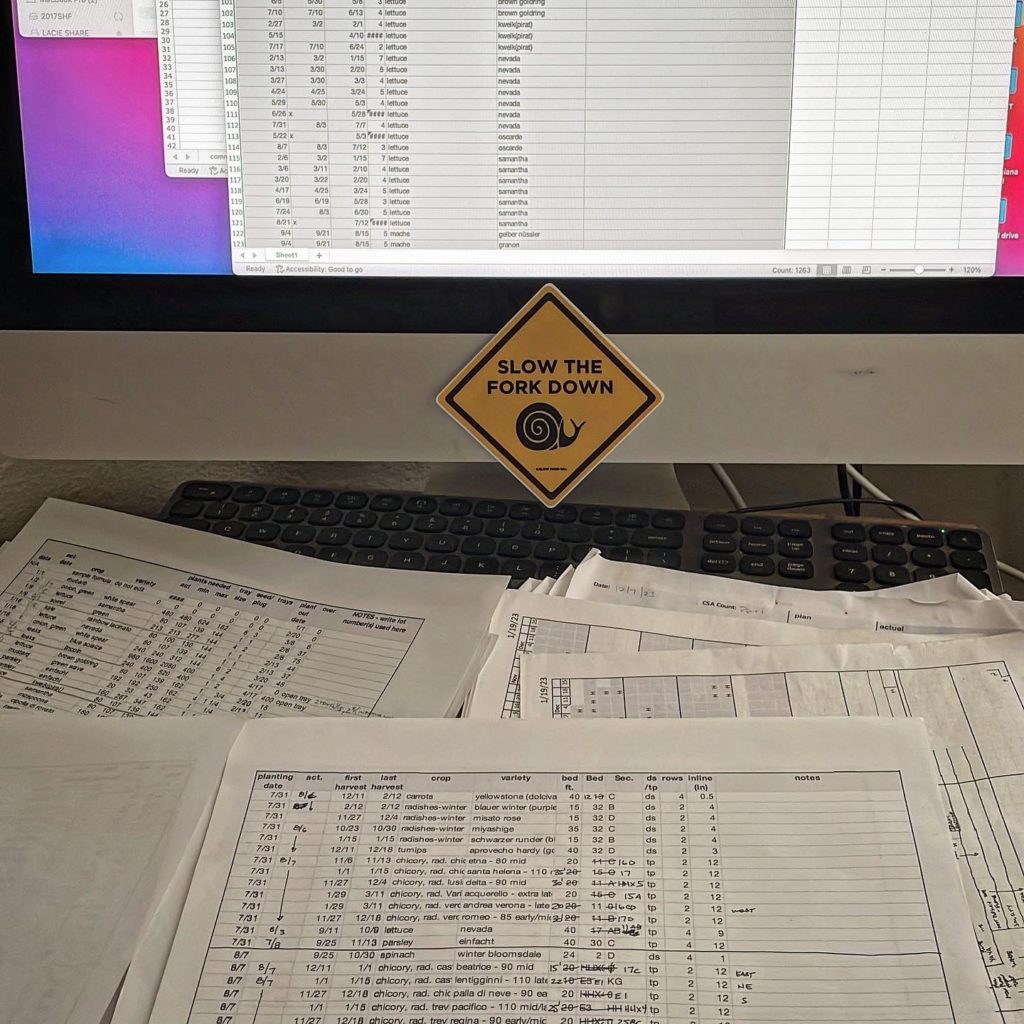
It’s now late December and once again I’m appreciating the quick records I kept on paper through the season and how easy it was to transfer the ones I needed back to the spreadsheet that I did the planning on last winter to check on the actual dates to maturity for seedlings in the greenhouse, and lettuce crops in the field at different times of the year. I think it took me less than an hour to input and analyze all of the actual weeks to maturity on 185 greenhouse seedings and 30 lettuce plantings so I can update the plan for 2024. I’m about a month behind where I’d like to be in getting my 2024 planting plan finalized, but definitely better late than never in this case.
Build Your Own Farm Tools has a section on the spreadsheet and paper as planning and record keeping tools. This time of year it’s the tool I’m spending the most time with for sure.


